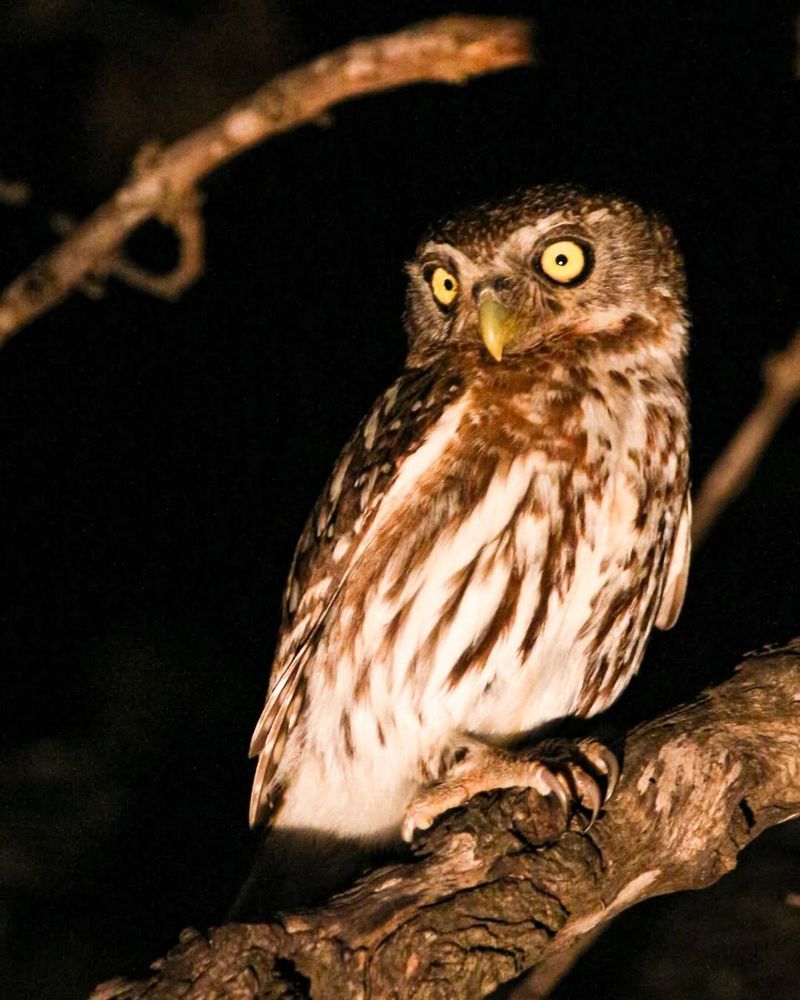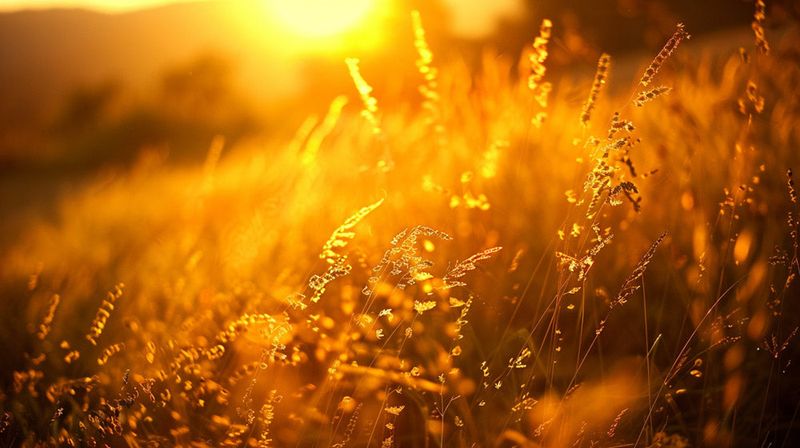As the sun dips below the horizon and the moon begins its slow climb, a hidden world awakens. Twilight—those dusky hours of dawn and dusk—is a time of transition, when both nocturnal and diurnal creatures cross paths and a unique cast of wildlife steps into the liminal light. These animals are adapted for a world not fully bright, nor completely dark—mysterious, fleeting, and full of wonder. In Creatures in Twilight, we step into the golden shadows with seven illuminating listicles.
The Glow Within: Bioluminescent Beings of Dusk
As twilight deepens, nature unveils its hidden wonders—bioluminescent beings that light up the darkness. Fireflies, the tiny heralds of night, flicker softly, weaving patterns of light as they dance through the air. Their glow is a beacon of life in the encroaching darkness, a siren song for mates or a warning for predators.
But fireflies are not alone in this luminescent display. Glowworms and certain fungi create an ethereal light show in the underbrush, while marine creatures like comb jellies and dinoflagellates shimmer beneath the surface of coastal waters. This natural glow isn’t just for show; it’s a survival tool. Camouflage, hunting, communication—all are enhanced by this otherworldly light.
In this dusky world, light comes from within. These creatures are a testament to nature’s creativity, adapting to the cloak of night by becoming their own light source. Bioluminescence adds a layer of magic to the twilight, reminding us that in the darkest moments, there are still sparks of wonder to be found.
Silent Wings, Soft Steps: Hunters of the Golden Hour
In the golden hour of twilight, predators with a penchant for silence find their time to shine. Owls, with their silent wings, glide through the air, their eyes piercing the dimness to locate unsuspecting prey. Each movement is a calculated dance, a blend of precision and stealth that leaves little room for error.
Bats join this aerial ballet, emerging from their roosts to dart and dive with sonar-guided accuracy. On the ground, wildcats, jackals, and hyenas begin their prowl, their movements purposeful and deliberate. They exploit the veil of dusk, when their prey is least alert, turning the fading light into an ally.
These hunters are masters of adaptation, using the subdued twilight to cloak their approach. Their world is one of quiet anticipation, where every sound, every shadow, becomes a clue in the hunt. In the balance between light and darkness, they find their moment—a brief window where their skills are unrivaled, and the chase becomes a dance with destiny.
Whispers of Change: How Light Shapes Behavior
The gentle shift from day to night is more than a visual spectacle—it’s a call to action for creatures great and small. As the light wanes, birds like robins and blackbirds fill the air with song, their melodies echoing through the quiet as they mark territory and seek mates. It’s a symphony of sound that signals the start of a new chapter in the twilight.
Frogs, too, join this chorus, their rhythmic croaks a magnet for potential partners. Even the flora responds; evening primroses unfurl their petals, welcoming the night’s pollinators. This transition is orchestrated by circadian rhythms, the internal clocks that sync life with the sky’s changing hues.
Twilight represents more than merely the passing of time. It orchestrates a behavioral ballet, a harmonious blend of sight and sound. As the world shifts from sunlight to starlight, creatures adapt, their actions shaped by the whispers of change. In this fleeting interval, life’s rhythms pulse in harmony with the cosmos.
Twilight Tacticians: The Art of Being Crepuscular
In the gentle embrace of twilight, some animals have perfected the art of being crepuscular. Deer and rabbits emerge from their hiding spots, dancing between the shadows and the fading light. It’s a magical time where the world seems to hold its breath, waiting in hushed anticipation. Fireflies add a touch of enchantment, their soft glow punctuating the dimness like tiny, floating lanterns.
This behavior is not just a whimsical choice; it’s a strategic one. By being active during these in-between hours, animals like mosquitoes avoid the glaring heat of the day and the chilling predators of the night. Mountain lions and foxes, the silent hunters of dusk, capitalize on this time, using their heightened senses to track down prey that is lulled into a false sense of security.
For these twilight tacticians, the world is a canvas painted in shades of grey and gold. Their senses are honed to perfection, navigating the subtle nuances of the landscape. Sight, sound, and smell blend seamlessly, allowing them to thrive. It’s a time of quiet movement, cautious feeding, and secret encounters—a hidden symphony of life at the edge of light and darkness.
Magic Hour: Why Twilight Captivates Us Too
Twilight captivates the human spirit in a way few things can. Known to photographers as the ‘golden hour’, this time bathes the world in warm, soft hues, casting a dreamlike glow over everything it touches. It’s a moment of tranquility and reflection, where the day’s hustle fades into the gentle embrace of evening.
In the realm of folklore, twilight is a time of magic and mystery—a threshold where fae and spirits are said to wander. Artists and writers draw inspiration from this ephemeral light, finding parallels in its transient beauty and the nature of life itself.
Psychologically, twilight soothes the mind, evoking feelings of peace and nostalgia. Whether it’s watching the fireflies rise in a field or listening to the night settle in, there’s an inherent connection—a reminder of ancient rhythms that still hum beneath our modern veneer. Twilight whispers to us of balance, change, and the enduring dance of light and shadow.
Twilight Travelers: Migratory Patterns at Dusk
At twilight, the sky becomes a highway for migratory birds, their silhouettes cutting across the fading light. These twilight travelers embark on epic journeys, guided by instinct and the stars. The cooler temperatures and reduced wind turbulence make this time ideal for long-distance flight.
Birds like swallows and swifts take to the skies, their formations a testament to nature’s precision. The phenomena of migration is one of nature’s greatest spectacles, a blend of endurance and direction that transcends borders and continents.
As the sun dips below the horizon, these travelers continue their voyage, driven by unseen forces and ancient routes. Twilight becomes both a refuge and a passage, a time when the divide between land and sky blurs, and the journey becomes an endless ribbon of dusk stretching onward.
Dusk Dwellers: Insects of the Night Shift
As daytime creatures retreat, a different kind of life emerges to claim the twilight. Moths, often overshadowed by their butterfly cousins, take center stage with their delicate, powdery wings. They flock to the glow of streetlights or the soft luminescence of the moon, drawn by an instinct as old as time.
These insects, along with crickets and cicadas, create a nighttime symphony that fills the air with life. Their calls and chirps act as a backdrop to the twilight, a rhythmic reminder of the night shift taking over. For them, dusk is a time of bustling activity and interaction.
In this dimly lit world, every rustle and flutter is magnified, painting a complex picture of life in the shadows. Dusk dwellers remind us that the night is not a time of stillness but of vibrant, hidden activity. It’s a celebration of the unseen and the often-overlooked, a world thriving in the gentle embrace of twilight.







